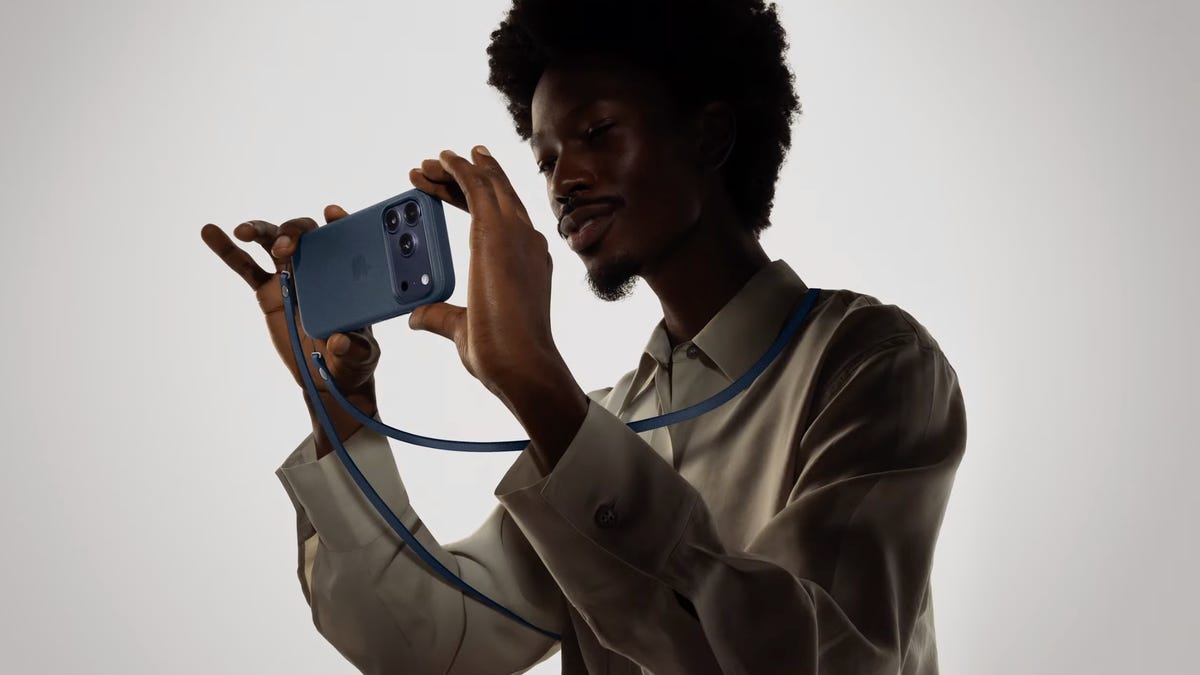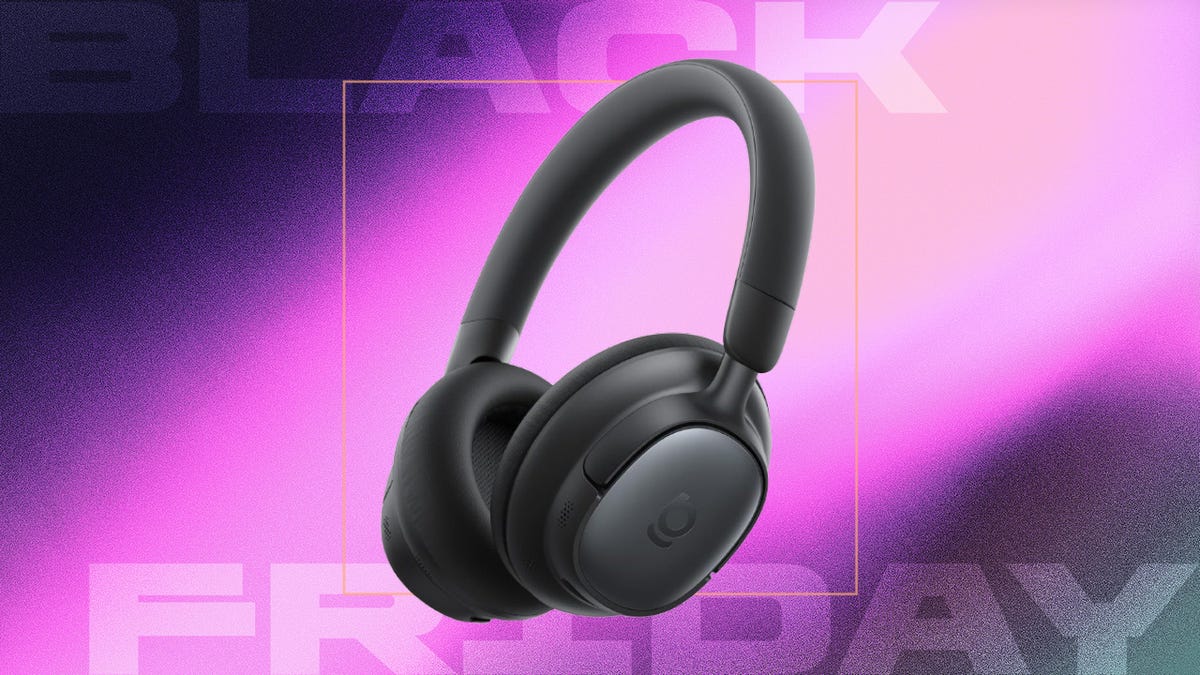Technologies
CNET Debates: Is Apple’s New Crossbody Strap a Great Idea or a Terrible One?
Does the crossbody strap make it more or less likely that you’ll have your iPhone stolen? We have conflicting opinions.

One thing you can be sure of during an Apple event is that it will generate immense quantities of discourse among CNET’s seasoned nerds — and no, we don’t always agree with one another.
Is the iPhone Air totally pointless and uncalled for, or the best design innovation since very thinly sliced bread? Both can be true, depending on whom you ask.
Among the many announcements on Tuesday that sparked conflicting opinions was a crossbody strap for the iPhone. After a back-and-forth in Slack, my colleague Zach McAuliffe and I have decided to put forth our respective viewpoints and allow you to be the judge.
Don’t miss any of our unbiased tech content and lab-based reviews. Add CNET as a preferred Google source.
Great idea: Katie Collins, Principal Writer
Have you ever been walking down the street to meet your friend, navigating using Google maps and texting your pal to let them know you’re running late, when all of sudden: bam! A dude on a moped has whizzed past at high speed and removed your phone from your hand before you’ve even had a chance to realize what’s happened?
In London, this style of phone theft is a daily occurrence, and while it’s never happened to me personally, every time I step foot on the streets of the British capital, I’m immediately wary and vigilant.
Earlier this year, the Guardian reported that survey data from American insurance company SquareTrade showed that 39% of all European phone theft take place in the UK, and that 42% of British phone thefts occur in London. So common is it for your phone to be snatched by someone on a bike or moped that London’s Metropolitan Police issue special prevention guidance, featuring advice such as: «[when using your phone,] stand away from the roadside, close to a building or wall, so no one can come up behind you.»
I get that a crossbody is not a failsafe method to prevent iPhone theft. I would never advise someone to walk around a city in a state of blissful ignorance while their phone flaps hands-free against their body. But I do endorse it as a way to fend off opportunists on two wheels.
I can see other times the crossbody strap would come in handy, too. Frequently on my travels, I find myself on a boat, clutching the railing and taking pictures on my phone as the world passes me by. Always in these situations I’m concerned that just one clumsy slip could see my precious phone go the way of the Heart of the Ocean in Titanic. A crossbody strap would provide peace of mind in such moments to protect me against my own idiocy.
As a clumsy person who dreads having their phone stolen, I will be investing in one of Apple’s crossbody iPhone straps the moment they become available. I personally can only see the benefit in having my phone glued to my body as well as my hand.
Terrible idea: Zach McAuliffe, Staff Writer
When I saw Apple’s new crossbody strap for the iPhone, my first thought was, «I bet someone could cut that real easily and steal someone’s iPhone.»
But surely Apple thought of that and chose a cut-resistant strap made with something like Dyneema, right? Nope. According to Apple, the strap is made of recycled PET (polyethylene terephthalate) yarns. If you’re unfamiliar with this kind of yarn, it’s a synthetic fiber made from recycled plastic bottles.
If you had a razor or something similarly sharp, you could cut through the strap like a hot knife through butter. Then there’s nothing stopping you from taking the iPhone. The decision to dangle a thousand-dollar device off a strip of non-cut-resistant plastic gives me so much anxiety.
Some people on Reddit said they’ve had their crossbody bags and purses stolen because someone cut the straps and ran or rode off, so it does happen. Granted, so does someone snatching a phone from your hand. But if I’m wearing my iPhone as a bag, I’m advertising that I have an iPhone and all you have to do is follow me for a second in order to cut the straps and take off with it.
Plus, if I’m my iPhone is tethered to me by a strap, I might be more cavalier with how I handle it. The strap and corresponding case are meant to keep the device safe, so I might take for granted things that could damage it out in the world. What if a car kicks a rock up and hits it, or I bump into a metal railing a little too hard or any number of things happen and my iPhone gets a new scratch or breaks?
No, I’d much rather grip my iPhone like my life depends on it when the device is in my hand. And then I’ll slip my iPhone into my pocket for safe keeping like Bilbo Baggins after he finds the One Ring.
The crossbody strap is a bad idea. I know people have things taken all the time, but the strap is like wearing a sign around your neck that you have an iPhone and with a quick snip it could be yours! Hopefully Apple will make a cut-resistant strap in the future.
For more from Apple’s event, check out all the announcements and our hands-on with the ultra-thin iPhone Air.
Technologies
Here’s How Much Tesla’s New Affordable Electric Cars Cost
What do you get with the stripped-down Model Y and Model 3? A lower price, for starters.
Technologies
This New Car Feature Uses AI to Keep You From Missing Your Exit
Google Maps’ live lane guidance is being integrated into Polestar’s head-up display.
Technologies
Hurry to Nab the Baseus Bowie MH1 Headphones for Over Half Off With This Early Black Friday Deal
This deal drops the price of this premium pair to just $47, but this discount ends soon.

High-quality noise-canceling headphones can cost a pretty penny, especially if you are after adaptive ANC, all-day comfort, and a reliable battery life. Most options with all these features sit well over $100, but we just found a way to score a premium pair for less than $50.
Amazon has a solid early Black Friday deal on the Baseus Bowie MH1 headphones. You can get them for 20% off right now, which drops the price to $80. But stack that with the $25 on-page coupon and use the promo code 8JWTGEUN at checkout, and you slash another $33 off. That brings the final price down to just $47, which is a steal considering all the features you are going to enjoy.
The headphones come with cloud-soft protein leather earcups with resilient memory foam for cloud-like comfort. The pair is capable of blocking up to 99.8% of noise with –48 dB deep noise cancellation, and it adapts to your surroundings as needed.
Hey, did you know? CNET Deals texts are free, easy and save you money.
The 36mm drivers and full-range LCP diaphragms give you clear, rich sound no matter what you listen to. In addition, with Baseus Immersive Spatial Acoustics, the audio surrounds you for a more natural listening experience. For clearer calls, the headphones also pack 5-mic sound sensors with AI-powered voice enhancement and wind-noise reduction. You won’t have to repeat yourself constantly.
Battery-wise, you get up to 80 hours of playtime with ANC off, and 55 hours with it on. A quick 10-minute top-up can also get you up to an additional 10 hours of playback, which is great for when you’re out and about.
HEADPHONE DEALS OF THE WEEK
-
$200 (save $151)
-
$199 (save $150)
-
$329 (save $100)
-
$328 (save $72)
Why this deal matters
High-end audio gear doesn’t come cheap. This deal takes over 50% off a powerful pair of headphones, making the upgrade easy. It won’t last long, though, so it’s best to snap it up sooner rather than later.
Join Our Daily Deals Text Group!
Get hand-picked deals from CNET shopping experts straight to your phone.
By signing up, you confirm you are 16+ and agree to receive recurring marketing messages at the phone number provided. Consent is not a condition of purchase. Reply STOP to unsubscribe. Msg & data rates may apply. View our Privacy Policy and Terms of Use.
-

 Technologies3 года ago
Technologies3 года agoTech Companies Need to Be Held Accountable for Security, Experts Say
-

 Technologies3 года ago
Technologies3 года agoBest Handheld Game Console in 2023
-

 Technologies3 года ago
Technologies3 года agoTighten Up Your VR Game With the Best Head Straps for Quest 2
-

 Technologies4 года ago
Technologies4 года agoBlack Friday 2021: The best deals on TVs, headphones, kitchenware, and more
-

 Technologies4 года ago
Technologies4 года agoVerum, Wickr and Threema: next generation secured messengers
-

 Technologies4 года ago
Technologies4 года agoGoogle to require vaccinations as Silicon Valley rethinks return-to-office policies
-

 Technologies4 года ago
Technologies4 года agoOlivia Harlan Dekker for Verum Messenger
-

 Technologies4 года ago
Technologies4 года agoiPhone 13 event: How to watch Apple’s big announcement tomorrow


